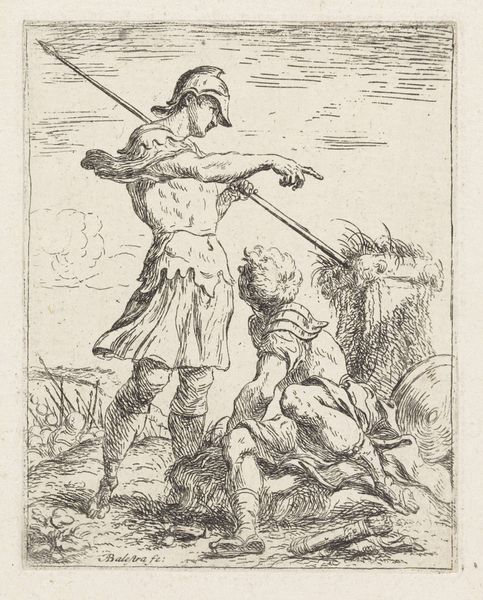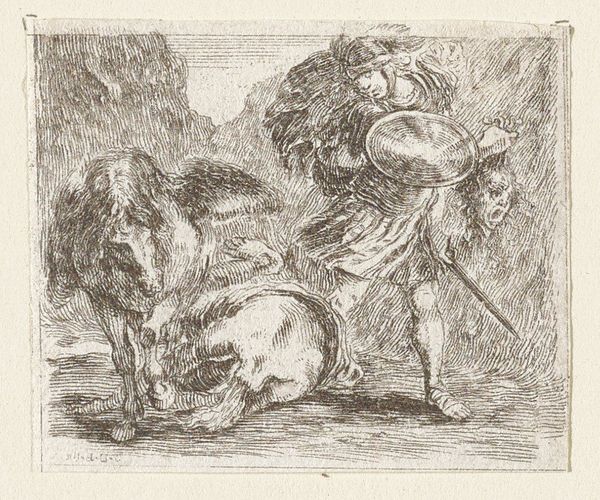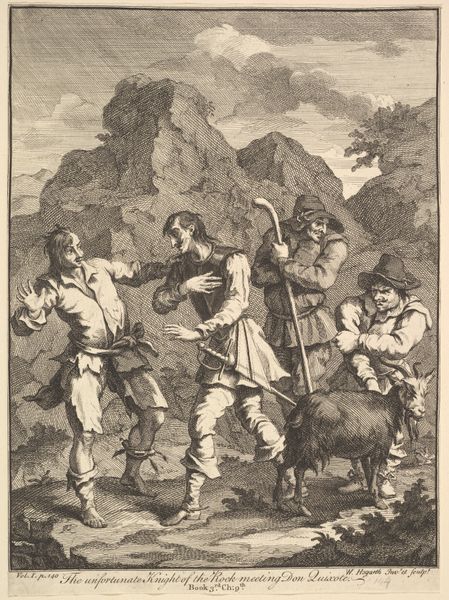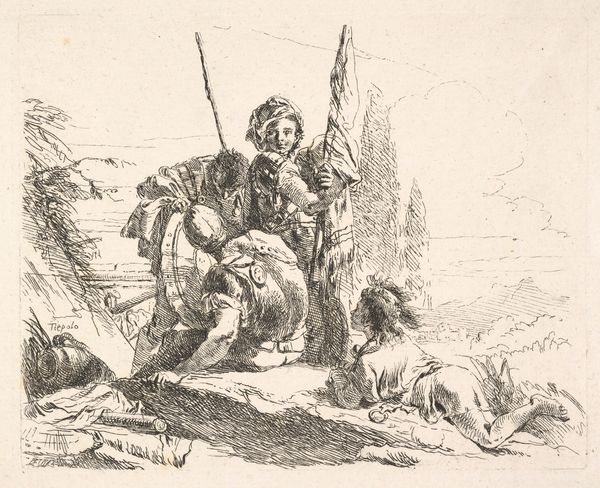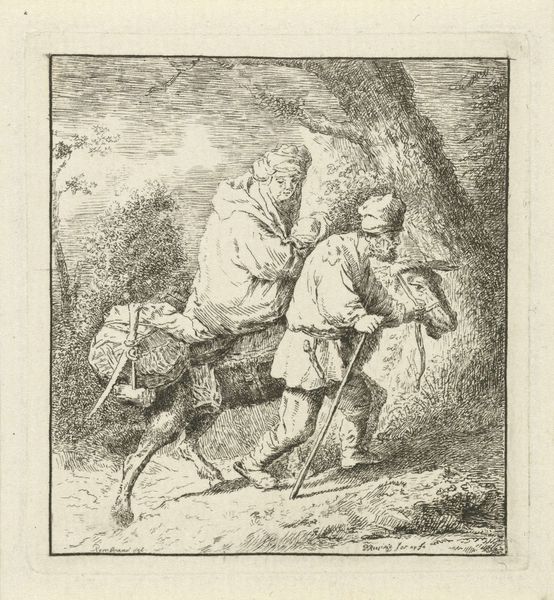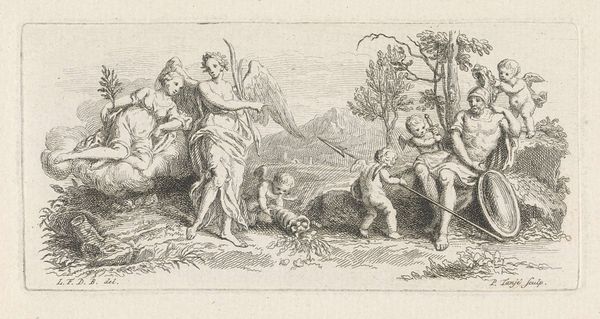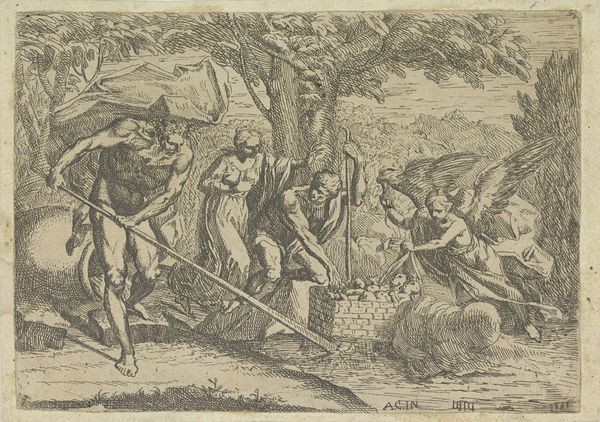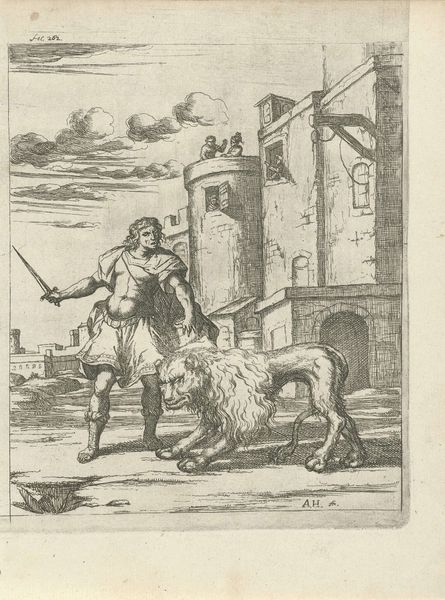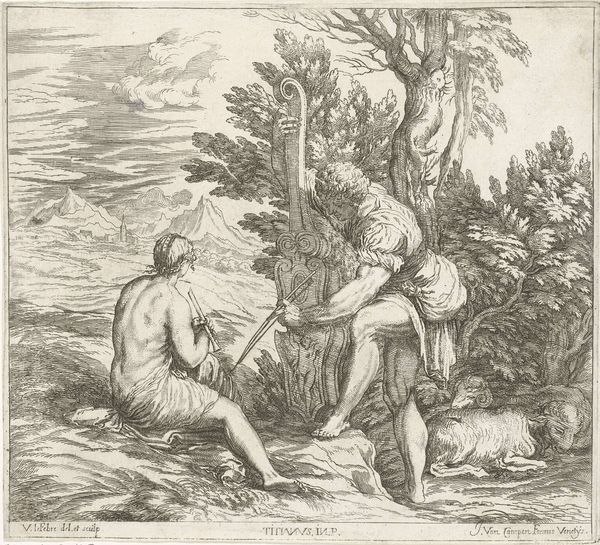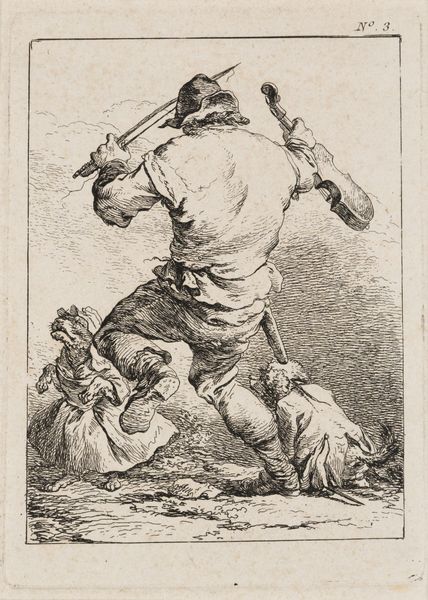
print, etching, engraving
#
narrative-art
#
baroque
# print
#
etching
#
figuration
#
italy
#
engraving
Dimensions: 1 13/16 x 2 3/16 in. (4.68 x 5.56 cm) (sheet)
Copyright: Public Domain
Editor: Here we have Stefano della Bella’s etching "Cephale et Procris," created around the 17th century. The details achieved with etching are quite mesmerizing. What is your take on this particular print? Curator: From a materialist perspective, I’m immediately drawn to the etching process itself. The artist's labor in creating this detailed plate, the consumption of materials, the means of distribution of these prints, and their availability... all speak to a shift in art production and accessibility. Were these prints largely circulated within aristocratic circles or were they also consumed by the rising merchant class? Editor: That's fascinating! I hadn’t considered the distribution. The paper seems like a fairly modest material. Was this typical for the period? Curator: Exactly! Think about the availability and cost of paper then, and how that limited the scale of production and affected the perceived value of the print. How does the choice of etching, as opposed to other printmaking methods, contribute to its meaning? It is more democratic, yet its own manual character is clear, differing radically from today's mass print production. Editor: I see what you mean. The line work has an inherent human quality, compared to something mechanically produced. Is there a hierarchy in the art world between etching and other types of works such as painting during the baroque period? Curator: Absolutely! And exploring how this etching challenges or reinforces such hierarchies is essential to understanding its cultural role. Consider, for example, how the narrative itself – the story of Cephalus and Procris – relates to themes of labor, ownership, or gender within its societal context. Does the artwork reinforce gender roles, or subvert the labor needed for recognition and the material price paid to own and to create these scenes? Editor: That provides so much to consider and definitely recontextualizes the entire artwork! Curator: Precisely! Shifting the focus away from purely aesthetic concerns opens avenues to understanding its socio-economic dimensions. Thank you. Editor: Thank you, it really changed the way I will see these prints in the future.
Comments
No comments
Be the first to comment and join the conversation on the ultimate creative platform.
